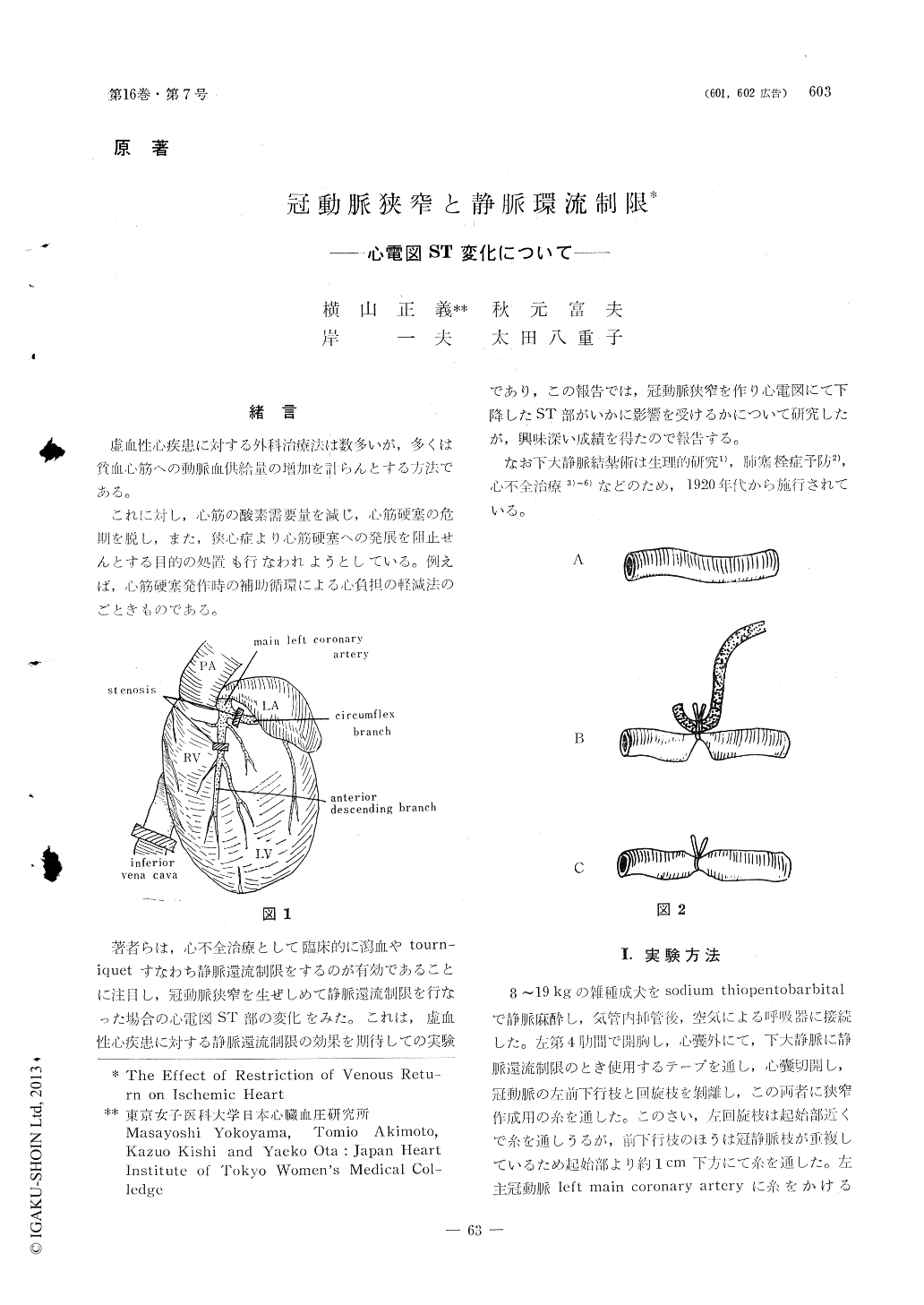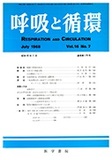Japanese
English
- 有料閲覧
- Abstract 文献概要
- 1ページ目 Look Inside
緒言
虚血性心疾患に対する外科治療法は数多いが,多くは貧血心筋への動脈血供給量の増加を計らんとする方法である。
これに対し,心筋の酸素需要量を減じ,心筋硬塞の危期を脱し,また,狭心症より心筋硬塞への発展を阻止せんとする目的の処置も行なわれようとしている。例えば,心筋硬塞発作時の補助循環による心負担の軽減法のごときものである。
著者らは,心不全治療として臨床的に瀉血やtourn—iquetすなわち静脈還流制限をするのが有効であることに注目し,冠動脈狭窄を生ぜしめて静脈還流制限を行なった場合の心電図ST部の変化をみた。これは,虚血性心疾患に対する静脈還流制限の効果を期待しての実験であり,この報告では,冠動脈狭窄を作り心電図にて下降したST部がいかに影響を受けるかについて研究したが,興味深い成績を得たので報告する。
なお下大静脈結紮術は生理的研究1),肺塞栓症予防2),心不全治療3)〜6)などのため,1920年代から施行されている。
Our experiments using 13 dogs observed that reduction of the venous return to the he-art brings about decrease in cardiac work and myocardial oxygen consumption.
In all of the 13 dogs, partial ligation of the left anterior descending and the left circumflex ooronary arteries resulted in depression of the ST-segment in electrocardiograms. Following this procedure, when the inferior vena cava was partially ligated so as to maintain the ao-rtic pressure at 80% of that of the control, the depressed ST-segment returned to the iso-electric line. Next, when the partial ligation of the inferior vena cava was released, the ST-segment became depressed.
It is our belief that reduction in the venous return to the heart decreases oxygen consump-tion by the myocardium, because there is less work for the myocardium to do. Therefore, the once depressed ST-segment returns to the normal line.

Copyright © 1968, Igaku-Shoin Ltd. All rights reserved.


